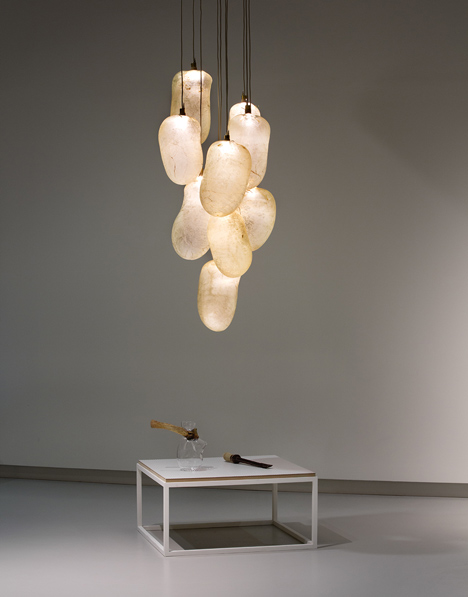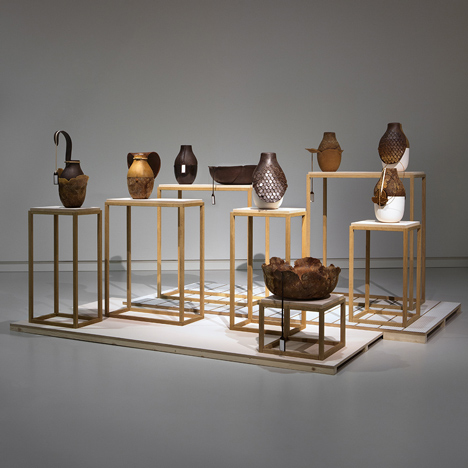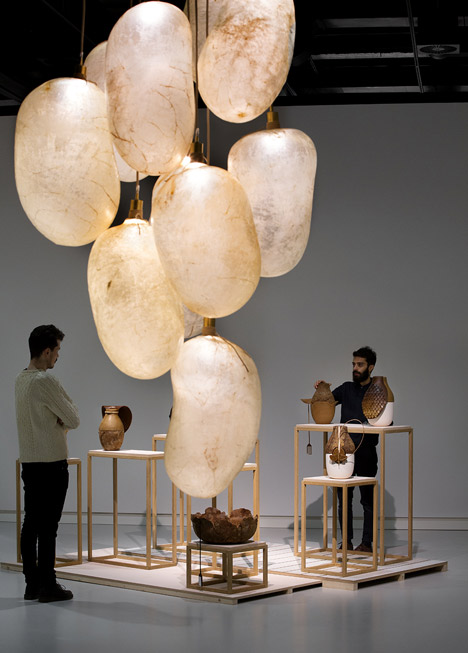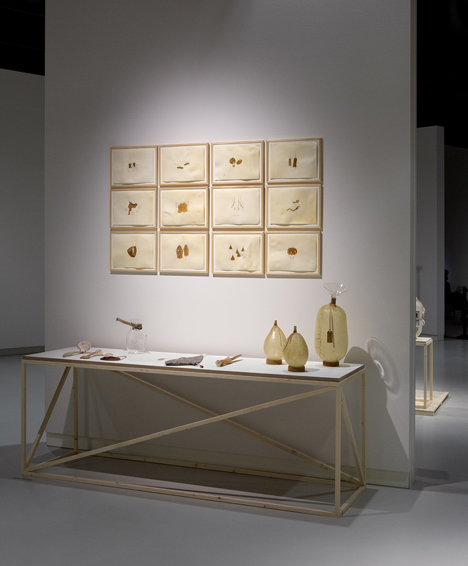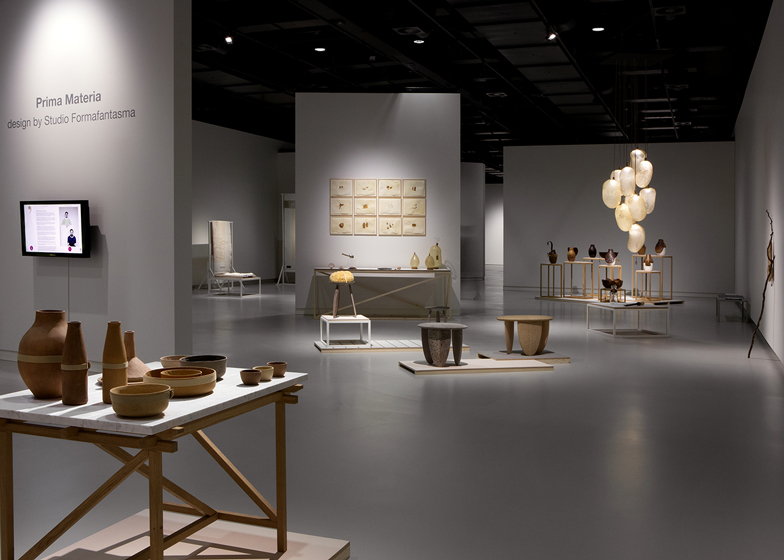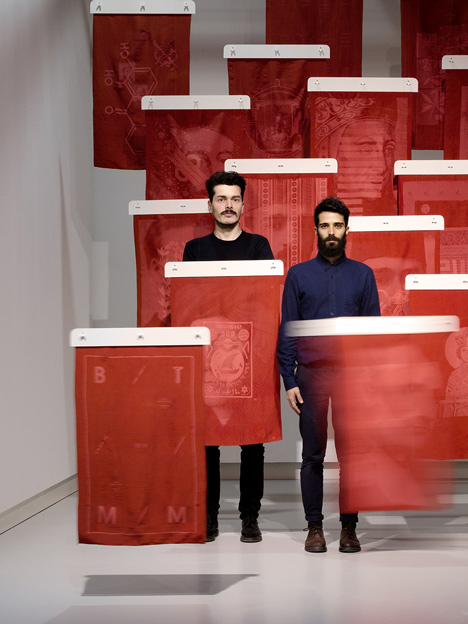INHALE is a cultural platform where artists are presented, where great projects are given credit and readers find inspiration. Think about Inhale as if it were a map: we can help you discover which are the must-see events all over the world, what is happening now in the artistic and cultural world as well as guide you through the latest designers’ products. Inhale interconnects domains that you are interested in, so that you will know all the events, places, galleries, studios that are a must-see. We have a 360 degree overview on art and culture and a passion to share.

Cow-bladder lights, fish-skin stools and plastic made of beetles all feature in an exhibition of work by Eindhoven design duo Formafantasma.
The Prima Materia exhibition, at the Stedelijk Museum in the Dutch city of ‘s-Hertogenbosch, looks back at work by Italian-born designers Andrea Trimarchi and Simone Farresin of Formafantasma.
Their first retrospective encompasses four years of bizarre material experiments, which include creating products using waste from the food industry and baking tableware from culinary ingredients.
It spans from their Design Academy Eindhoven graduation project Moulding Tradition, which looks at the culture of craft in Caltagirone, Sicily, to more recent charcoal inserts that purify tap water in blown-glass containers.
Ranges of objects such as the Botanica vessels made from combinations of natural polymers are presented as complete sets.
Fish-skin hot water bottles, boar-fur brushes, plus lights and water containers made of inflated cow bladders, all included in the Craftica collection commissioned by fashion house Fendi, are also on show.
The exhibition is organised in two parts. Videos, sketches and material samples along the entrance corridor give a behind-the-scenes look at the duo’s work processes before the finished pieces are viewed in the main space.
“We wanted the exhibition to be more than just about the final pieces or the making of the objects,” Trimarchi told Dezeen. “It was important to show how our projects are ‘vessels’, and show the context and concept behind the work without being too literal.”
via dezeen.com



